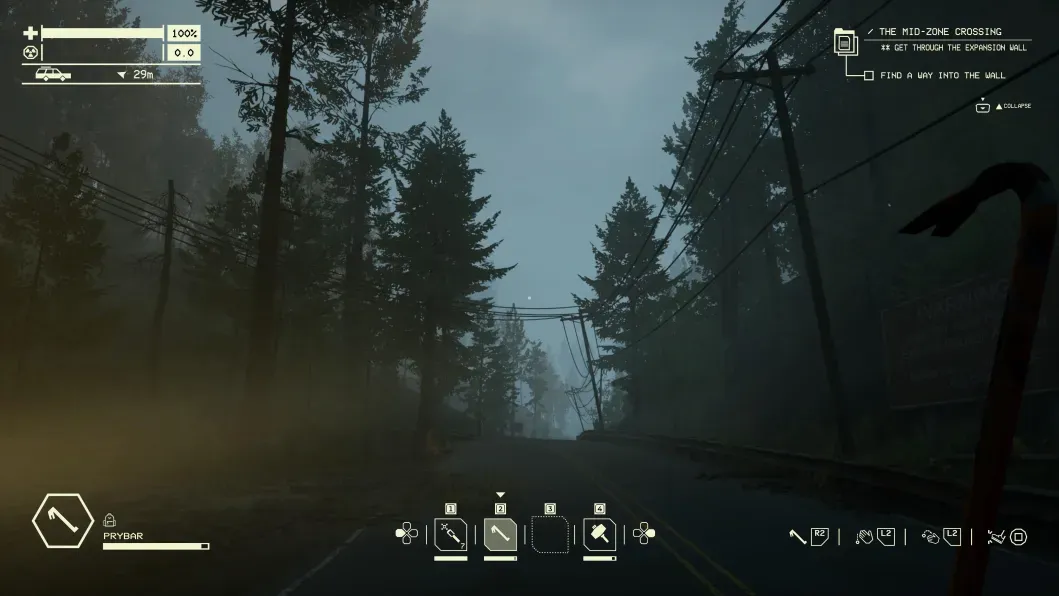
Every few years, it seems like an indie developer comes in and attempts to shake things up in a genre. This time, it’s Ironwood Studios putting out Pacific Drive. Pacific Drive is a first-person survival-horror title starring your character and a car you find quickly into the game. Your job as the driver is to help the people on the radio with tasks while also avoiding death traps all through the Exclusion Zone.
Pacific Drive takes place in 1998, telling the “untold story” of what happened in the Olympic Exclusion Zone in the Pacific Northwest. If that makes you feel the vibes of Twin Peaks and the like, you’re on the right track. As you begin your journey, your character finds their way into this zone that hasn’t seen a new face in quite a long time. When you teleport in and find the station wagon sitting there, over the radio you’ll hear the voices of multiple characters including a scientist who may or may not have had something to do with WHY the area is in a state of lockdown.
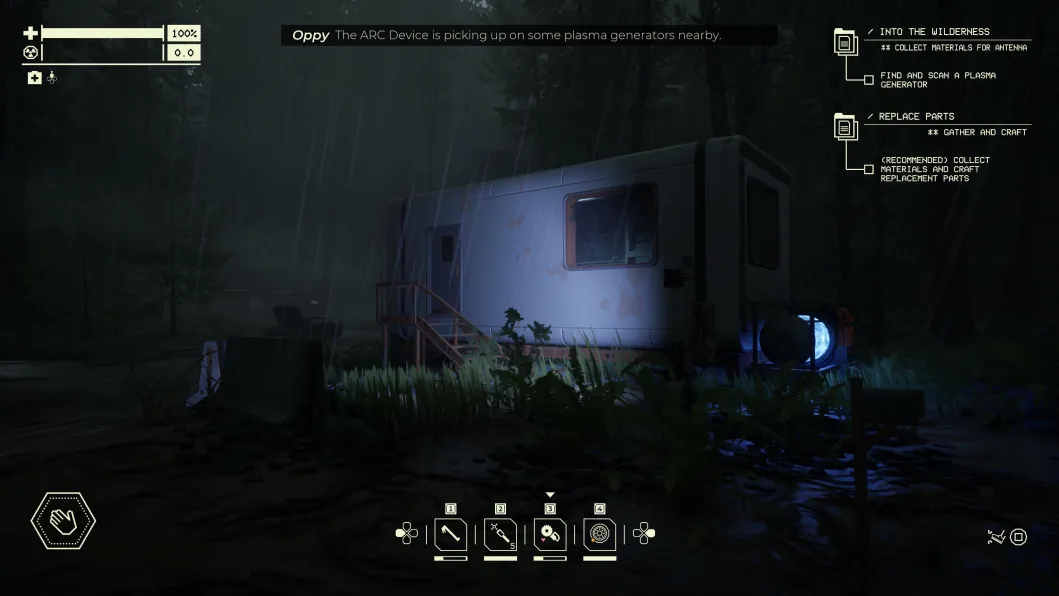
The lore itself is extremely interesting from the top down. From the moment I got into that Station Wagon I was ready to learn what caused the anomalies, what created this zone, who are these people talking on the radio, and if I can trust them. However, the conversations with the characters you’ll hear over the radio are quite different from the way they show some of the “historical information.” Along your path you’ll find emails, text messages, etc. from people who were either in the zone when it was melting down or had something to do with the meltdown itself.
My biggest gripe with this is that you’ll need to park your car and hope no “enemies” show up while you’re reading or right after you finish reading. The way I loved them doing this was through the black box type radios you could pick up during runs (they show up green on your map). These boxes contain fully voiced moments you can listen to while running from an enemy or running from the anomalies and storm. Learning each bit of information made me that much more interested, however, I did start to ignore some of the emails/texts especially during peak stressful moments leaving me feeling like I may have missed some key lore.
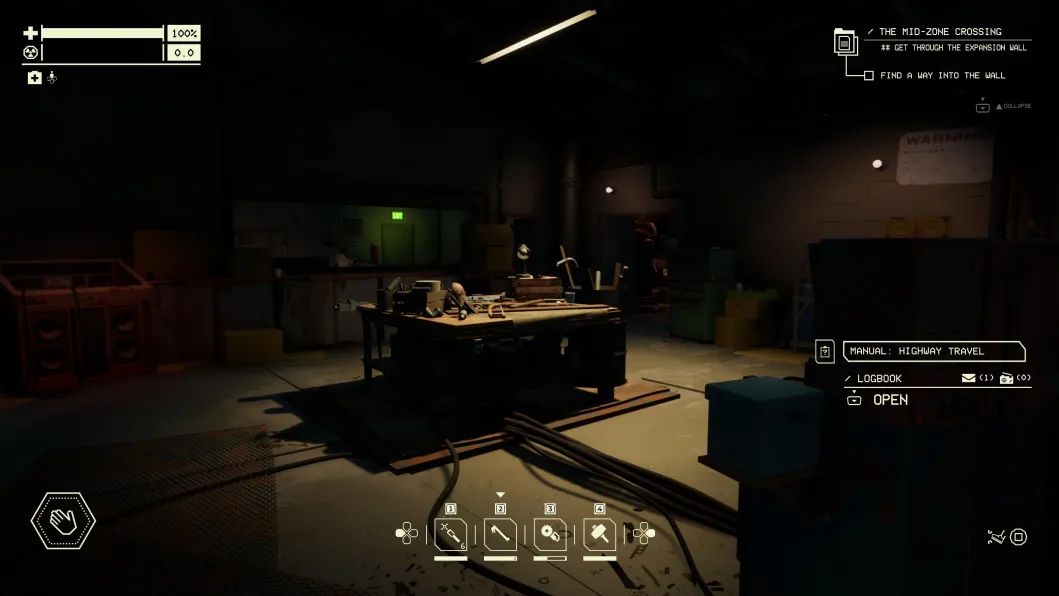
While the world is fascinating, the gameplay was EXTREMELY difficult for me. I spent the first nine hours on just the first five or six missions. Dying constantly from falling off of the road (even without an anomaly to mess with the car), the car taking damage from anything and everything, getting lost in the electrical storm; one thing after another. Personally, I felt like I was understanding everything from crafting, to decorating, and even navigation; but for some reason, I simply had so much trouble even finishing runs meant just to collect scrap and rubber. That’s when I got the big guns out and called Editor-In-Chief of Gaming Trend and Survival Horror Savant, Ron Burke, to take a look and see if I was the issue or if the game really is that hard.
Ron: TLDR? It is. Or at least, it starts off that way. Pacific Drive is very much a survival game, but not the type you might imagine. Very little is explained, and it’s up to you to discover the world around you. The mechanics of your car (truly the central protagonist of this adventure) is purposely obtuse. Your car will get quirks and you’ll have to do a bit of homework and research before you even understand why your side door flies open when you honk your horn. When these things DO click, however, suddenly the whole game starts to fall into place…until it doesn’t. Trial and error is constant, as is the need to re-evaluate those same mechanics from a new perspective from time to time. Things you thought you understood take on new aspects. I can’t say more without ruining some of the surprises, but they are as rewarding as they are obtuse. Back to Adam!
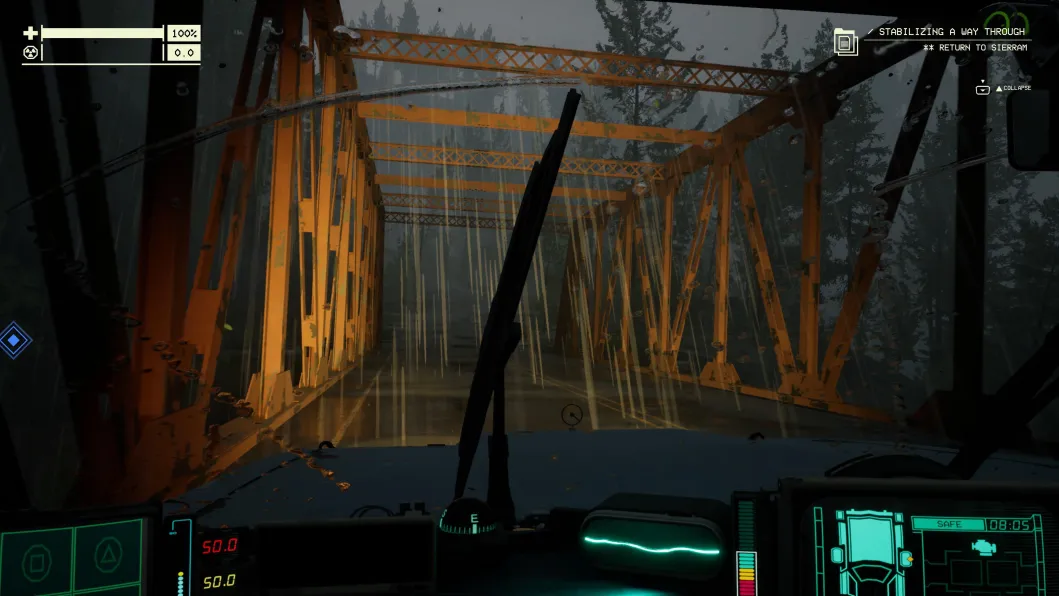
Inside the zone, you’ll face many enemies, from flying robots with tow-cables to little green balls of negative energy that reminded me a lot of Buzz Droids in Star Wars. Each one wants to cause chaos. It never felt like they were ever doing anything on purpose or taking you in any particular direction, they just wanted your car to be off the road and facing a tree, rock, or some other highly damaging piece of environment. As you and your Station Wagon continue your journey, you’ll find ways to get rid of these little annoyances, but early game, they’ll be the reason you’re restarting for sure.
The “storm” that I mentioned earlier, in this case works the same way as Fortnite, Apex Legends, etc. but shows up, mostly, when you boot up your car to teleport home. In the storm you’ll take plenty of damage and lose control of your car like you would with an anomaly. However, stay in the storm too long and you’ll be in trouble. I lost plenty of times just because I could not get to the teleportation beam in time.
Whenever I felt frustrated, I tended to start scrapping things out on the road. You get plenty of different items, but my favorite is the buzz-saw that allows you to scrap cars you find along the way as well as scrap older pieces that you’ve replaced on the Station Wagon. During this time, you can find most anything you’ll need to unlock blueprints and make the items you’ll need.

As you can tell, there are quite a few things that stopped me from really enjoying the lore of Pacific Drive. Once I kept hearing the same dialogue moments over and over once I reached my fourth or fifth attempt, my patience was wearing thin.
There were still plenty to like about the game as a whole. First thing is how expansive the crafting and repair systems are for the Station Wagon. While some of the menus can feel extremely overwhelming, once you get it down, it becomes much easier to navigate and find what you want. Inside of the repair shop, which works as a home base, you’ll have the ability to learn new crafting techniques, paint your car and add decals, repair anything you need to and replace the stuff you can’t repair. You can also take a look at what quirks your car might have…
What are quirks you’re asking? They’re little things that the car will start doing the more usage it gets. It reminded me of all the times characters in Star Wars would mention how quirky R2-D2 was throughout the Skywalker Saga. It makes the Station Wagon almost have a feeling it’s alive and as important a character as your character. You can use the computer next to the parking area to take a look at what might be the problem and you can fix them if you wish!

Speaking of the Station Wagon, part of its “charm” or in my case “frustration” is with how easily the tires are damaged by almost anything. You have to worry about air pressure and damage to the tire itself and if just one tire is low on air the entire car will drift significantly. I always kept major amounts of supplies so I could craft new tires because in a pickle, sometimes it’s easier to just replace the tire then try and add air and repair the tire.
You can also turn all of it off or limit how much you’ll be affected by the world. You can use the menu to turn off car damage and character damage, limit quirks, etc. Some of these such as the damage being off will limit the trophies you can get. However, I was unable to progress through the game without turning off damage so I could survive the storm and not fly off every thirty seconds or so. While turning everything off made the gameplay a tad easier, it did feel extremely like cheating and took away the “horror” element of the “survival-horror.”
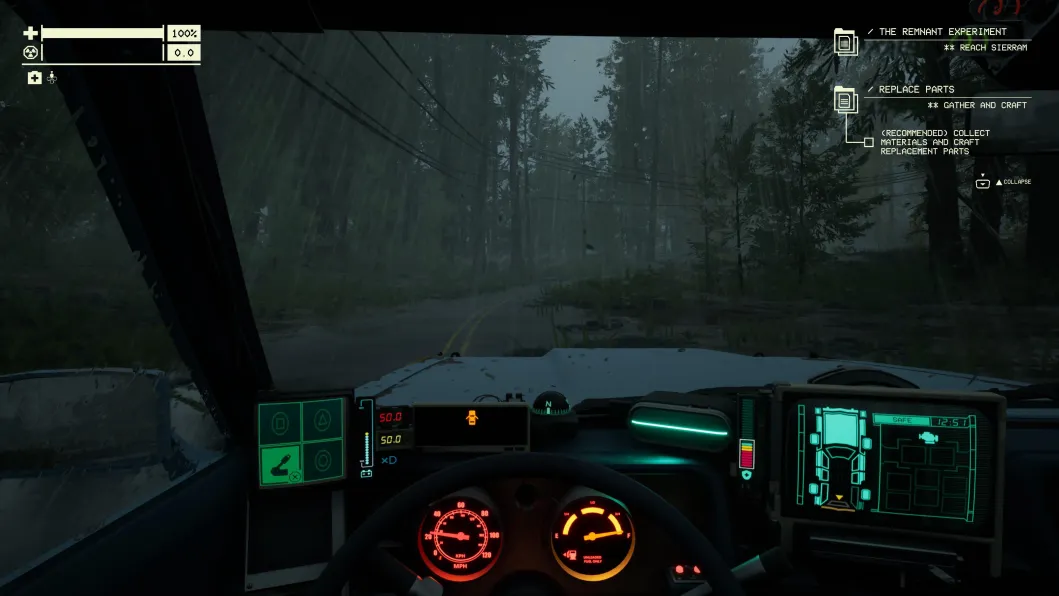
Graphically, this game looks great! The weather conditions looked up there with some of the major games from last year on the PS5. I appreciated the attention to detail and how different seeing out the front windshield is if it’s raining, foggy, the storm is coming in, etc. The only part graphically I found a bit jarring were the grass effects. However, the only time you’ll ever really interact with grass that close is out of the car, and in my time playing, I don’t think I spent much more than an hour total out of the car and most of that was crafting in the shop or looting houses/cars on the way to objectives.
At its core, Pacific Drive has some fun game ideas and lore, but the gameplay being so extremely difficult during early game makes it hard to recommend for anyone who is new or very early in their Survival Horror run. I’d recommend it to people like Ron with a wealth of experience in the genre who can focus all on the gameplay and understanding movement instead of having to figure everything out at the same time. It can be overwhelming and, in a genre, called survival-horror; the horror going on the backburner due to frustration with the survival isn’t a fun time.
Pacific Drive is available now on Playstation 5 and PC.
Pacific Drive
Good
Pacific Drive toes the line between “challenging fun take on the survival-horror genre” and “too complicated for its own good.” The game is full of interesting lore, hardcore crafting mechanics, and a world of driving with plenty to explore. While the driving can feel repetitive at times, if you can get a hold of the system, you’ll have plenty of fun in the Pacific Northwest.
Pros
- Interesting world lore
- Intense crafting/looting mechanics
- Graphically beautiful
Cons
- Takes a long time to get the hang of most anything
- Menus are jam-packed and overwhelming
